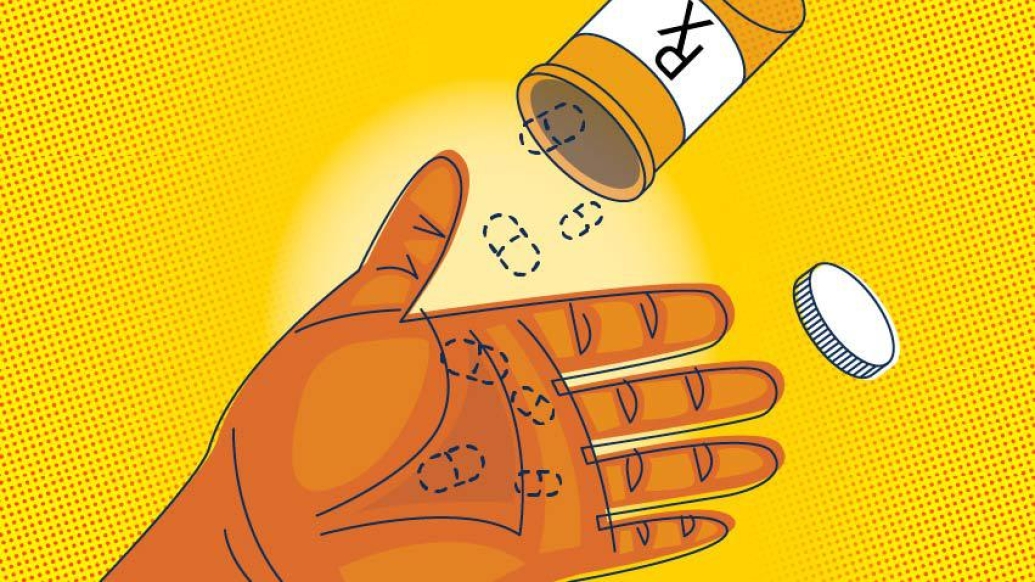Study finds declines in prescription drugs dispensed to children during COVID-19, including infection-related medicines and some used for chronic diseases.
5:00 AM
Author |

As children made fewer visits to health facilities and engaged in social distancing and other COVID-19 mitigation measures, a smaller number of them also received prescription drugs, a new study suggests.
Overall, medications prescribed for children dropped by more than a quarter during the first eight months of the pandemic compared to the previous year, with the steepest declines in infection-related medicines like antibiotics and cough-and-cold drugs.
Antibiotic dispensing to children and teens plunged by nearly 56% between April and December 2020 compared with the same period in 2019. Researchers also found declines in prescriptions for chronic diseases, such as attention deficit hyperactivity disorder, commonly referred to as ADHD, and asthma, but no change in prescriptions for antidepressants, according to the findings in Pediatrics.
"The decline in the number of children receiving antibiotics is consistent with the large decreases in infection-related pediatric visits during 2020," said lead author Kao-Ping Chua, M.D., Ph.D., a pediatrician and researcher at University of Michigan Health C.S. Mott Children's Hospital and the Susan B. Meister Child Health Evaluation and Research Center.
"Because antibiotics have important side effects, the dramatic decreases in antibiotic dispensing may be a welcome development," he added. "However, declines in dispensing of chronic disease drugs could be concerning."
Dispensing of infection-related drugs declined sharply
Researchers analyzed national prescription drug dispensing data from 92% of United States pharmacies to assess changes in dispensing to children ages 0-19 during COVID-19.
Between January 2018 and February 2020, nearly 25.8 million prescriptions were dispensed to children a month. Dispensing totals during the first 8 months of the pandemic dropped by about 27% compared to the same period in 2019.
Overall, drugs typically prescribed for acute infections, including antibiotics, fell by nearly 51% while those for chronic diseases fell by 17%.
"The decrease in antibiotic dispensing most likely reflects reductions in infections, such as colds and strep throat, due to COVID-19 risk–mitigation measures like social distancing and face masks," Chua said. "As a result, children had fewer infection-related visits and had fewer opportunities to receive antibiotic prescriptions, whether for antibiotic-appropriate conditions or antibiotic-inappropriate conditions."
MORE FROM THE LAB: Subscribe to our weekly newsletter
Chua's previous research has suggested that nearly a quarter of antibiotic prescriptions among children and adults may be unnecessary. In children, antibiotics are the leading cause of emergency room visits for adverse drug events, with potential side effects including allergic reactions, fungal infections and diarrhea.
Long term, antibiotic overuse may also contribute to antibiotic-resistant bacteria development, causing illnesses that were once easily treatable with antibiotics to become untreatable and dangerous, Chua said.
Another welcomed development in drug dispensing trends, researchers found, was a decline in prescription medicines to treat symptoms of the common cold, particularly to suppress coughs. Findings suggest a nearly 80 % drop in these medications (known as antitussive drugs) during the 2020 study period.
Because antibiotics have important side effects, the dramatic decreases in antibiotic dispensing may be a welcome development. However, declines in dispensing of chronic disease drugs could be concerning.Kao-Ping Chua, M.D., Ph.D.
"These drugs have little benefit but are associated with potentially harmful side effects, particularly in young children," Chua said.
"From the perspective of health care quality, the sharp decline in dispensing of cough-and-cold medications may represent a silver lining of the COVID-19 pandemic."
While dispensing of infection-related drugs to children could rebound as social distancing measures are lifted and infections increase, it may still not necessarily return to pre-pandemic levels soon, Chua said. If COVID-19 risk–mitigation measures continue in schools and day cares, for example, this may lower the incidence of conditions for which antibiotics are frequently prescribed, such as ear infections, sinusitis and upper respiratory infections.
Dispensing of chronic disease drugs declined less sharply
The study found a modest 11% decline in dispensing of prescriptions for ADHD.
"Whether this decline is concerning needs to be studied further," Chua said. "For example, it is unclear whether the decline in ADHD prescriptions reflect a reduced need for medications at school due to the transition to remote learning, disruptions in medication access or delays in diagnosis."
There were also large declines in dispensing of asthma medications, such as albuterol and inhaled steroids, researchers found.
Since national data suggest that the number of asthma attacks in children has dropped sharply during the pandemic, the decline in medication dispensing likely reflects better control of asthma, Chua said.
Researchers need more data, he noted, to better understand the lack of change in antidepressant dispensing to children during the pandemic.
"An optimistic view is that few children on established antidepressant regimens discontinued use," Chua said. "Studies, however, suggest that the mental health of children has worsened during the pandemic, particularly among adolescents. Given this, our findings might suggest that antidepressant dispensing has not risen to meet this increased need."
Like Podcasts? Add the Michigan Medicine News Break on iTunes, Google Podcasts or anywhere you listen to podcasts.
Clinicians may be able to use electronic health records to identify decreases in the frequency of refill requests among children on established drug regimens for chronic disease, Chua said. Providers could then call families to determine if there is a reason for concern – such as medications not being affordable for them – or if the changes reflect improved disease control.
Dispensing totals declined more sharply for prescriptions paid with cash than for other payer types. Chua said he believes that this finding may suggest that uninsured children faced greater financial-related barriers to accessing medical care and prescription drugs during the pandemic.
The decreased dispensing in kids is consistent with the drop in total number of prescriptions dispensed to adult Americans, which declined sharply during the pandemic, but subsequently rebounded. However, the study indicates dispensing to children has not rebounded to the same degree, Chua said.
"This study provides a national picture of prescription drug dispensing to children before and during the pandemic," he said. "It will be important to monitor whether the reductions we demonstrate are temporary or sustained."
Additional authors include Anna Volerman, M.D., from the University of Chicago and Rena M. Conti, Ph.D., from Boston Questrom University School of Business.
Study Cited: "Prescription Drug Dispensing to US Children During the COVID-19 Pandemic," Pediatrics, DOI: 10.1542/peds.2021-049977

Explore a variety of healthcare news & stories by visiting the Health Lab home page for more articles.

Department of Communication at Michigan Medicine
Want top health & research news weekly? Sign up for Health Lab’s newsletters today!





